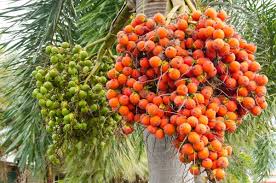Turmeric farming involves several steps to ensure a healthy and productive crop. Below is a comprehensive package of practices for turmeric cultivation:
1. Site Selection and Soil Preparation
Climate and Soil Requirements:
- Turmeric grows well in a warm and humid climate.
- Ideal temperature: 20-30°C.
- Well-drained, fertile loamy soils rich in organic matter are best.
- Soil pH: 4.5 to 7.5.
Land Preparation:
- Plow the land thoroughly to a depth of 15-20 cm.
- Create raised beds or ridges and furrows to facilitate drainage.
- Apply well-decomposed farmyard manure (FYM) at 20-25 tons per hectare.
2. Seed Material and Planting
Rhizome Selection:
- Use healthy, disease-free rhizomes.
- Cut rhizomes into pieces weighing about 20-25 grams each, each with one or two buds.
Planting:
- Planting time: April to June, depending on the monsoon.
- Spacing: 30-40 cm between rows and 25-30 cm between plants.
- Depth: 5-7 cm deep, ensuring buds face upwards.
3. Nutrient Management
Fertilization:
- Basal application: 25 tons of FYM per hectare.
- Chemical fertilizers: NPK at 60:50:120 kg per hectare.
- Apply nitrogen in three split doses: one-third at planting, one-third at 60 days after planting, and one-third at 120 days after planting.
- Phosphorus and potassium can be applied as a basal dose at planting.
4. Irrigation Management
Watering Schedule:
- Ensure regular irrigation, especially during dry spells.
- Frequency: Every 7-10 days during dry periods.
- Avoid waterlogging, which can cause rhizome rot.
5. Weed Management
Weed Control:
- Mulching with organic materials like straw or green leaves helps control weeds and conserve moisture.
- Manual weeding is recommended 2-3 times during the growing season.
- Herbicides can be used as per recommendations from local agricultural extensions.
6. Pest and Disease Management
Common Pests:
- Rhizome fly, shoot borer, and scale insects.
Common Diseases:
- Rhizome rot, leaf blotch, and leaf spot.
Control Measures:
- Use disease-free planting material.
- Ensure proper drainage to prevent rhizome rot.
- Apply recommended pesticides and fungicides as necessary.
- Rotate crops to minimize disease build-up in the soil.
7. Harvesting and Post-Harvest Management
Harvesting:
- Harvest 7-9 months after planting when leaves turn yellow and start drying.
- Uproot the entire plant and gather rhizomes.
Post-Harvest Processing:
- Boiling:
- Boil rhizomes in water for 45-60 minutes until froth appears.
- This helps in uniform color distribution and reduces drying time.
- Drying:
- Dry boiled rhizomes in the sun for 10-15 days.
- Proper drying ensures less than 10% moisture content.
- Polishing:
- After drying, polish the rhizomes to remove the outer skin and improve appearance.
- Can be done manually or using polishing drums.
- Grinding:
- For powder production, grind dried rhizomes into fine powder.
8. Storage
Storage Conditions:
- Store dried rhizomes in a cool, dry place.
- Ensure proper ventilation to avoid mold growth.
- Use airtight containers for turmeric powder to maintain quality.
9. Marketing
Market Channels:
- Sell fresh rhizomes or processed products like dried rhizomes and turmeric powder.
- Explore local markets, wholesale markets, and direct sales to processors.
Additional Tips
- Organic Farming:
- If opting for organic farming, avoid synthetic chemicals and use organic manures and bio-fertilizers.
- Value Addition:
- Consider value-added products like turmeric oil, capsules, and packaged powder.
- Record Keeping:
- Maintain records of all farming activities, inputs used, and expenses for better management and traceability.
Implementing these practices should help you achieve a successful turmeric farming venture. If possible, consult local agricultural extensions or experts for region-specific advice.






